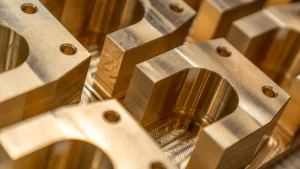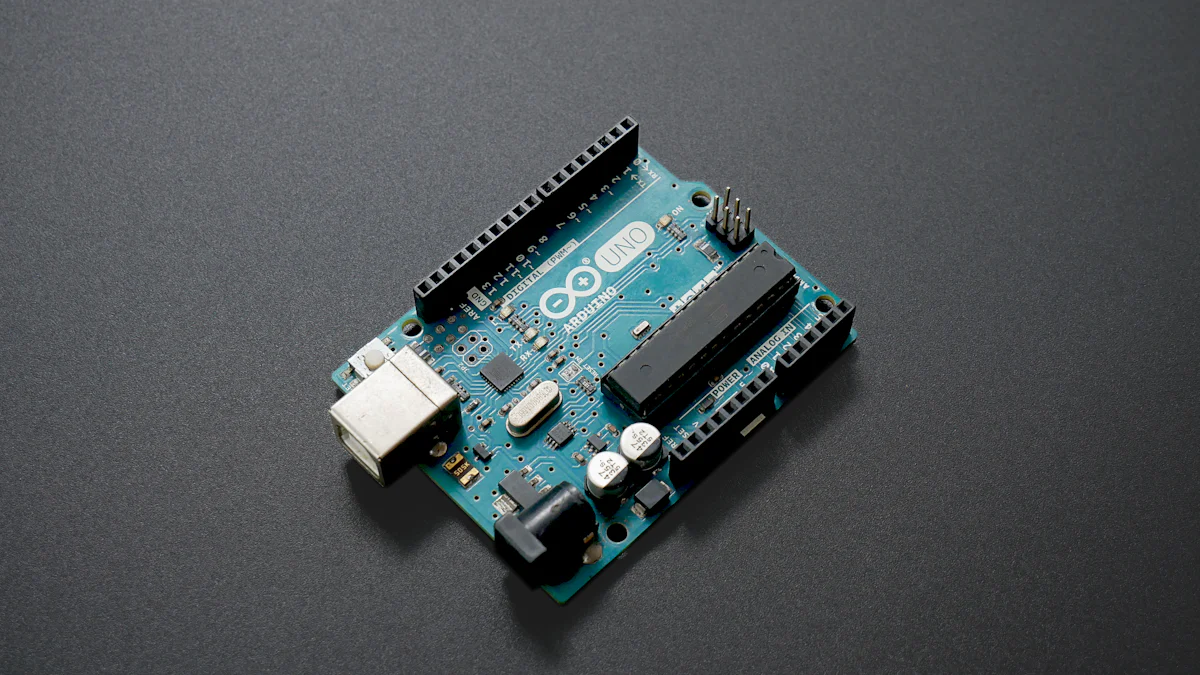
The 4 Inch GaAs Wafer represents a cornerstone in the semiconductor industry, offering unmatched performance for advanced electronic applications. Its unique properties enable high-speed and high-frequency operations, making it indispensable for cutting-edge technologies. Industry professionals rely on this wafer for its precision and reliability in optoelectronic devices, such as LEDs and solar cells. Understanding its technical features is crucial for optimizing device performance and ensuring seamless integration into complex systems. This wafer’s significance lies in its ability to meet the rigorous demands of modern semiconductor manufacturing.
Key Takeaways
- The 4 Inch GaAs Wafer is essential for high-frequency applications due to its exceptional electron mobility, enabling faster signal transmission and reduced energy loss.
- Precise resistivity control in GaAs wafers enhances device efficiency by optimizing current flow, making them ideal for high-performance electronic and optoelectronic devices.
- Uniform thickness and strict surface quality standards minimize defects during manufacturing, ensuring seamless integration into complex systems.
- Choosing the correct crystallographic orientation of the wafer is crucial for optimal device performance, impacting processes like etching and deposition.
- GaAs wafers outperform silicon in applications such as RF amplifiers and optoelectronics, thanks to their superior frequency handling and direct bandgap properties.
- Emerging technologies like quantum computing and advanced sensors benefit from the unique properties of the 4 Inch GaAs Wafer, highlighting its versatility in the semiconductor industry.
- Customization options for GaAs wafers allow manufacturers to tailor solutions to specific application needs, ensuring compatibility and performance.
Key Technical Specifications of 4 Inch GaAs Wafer
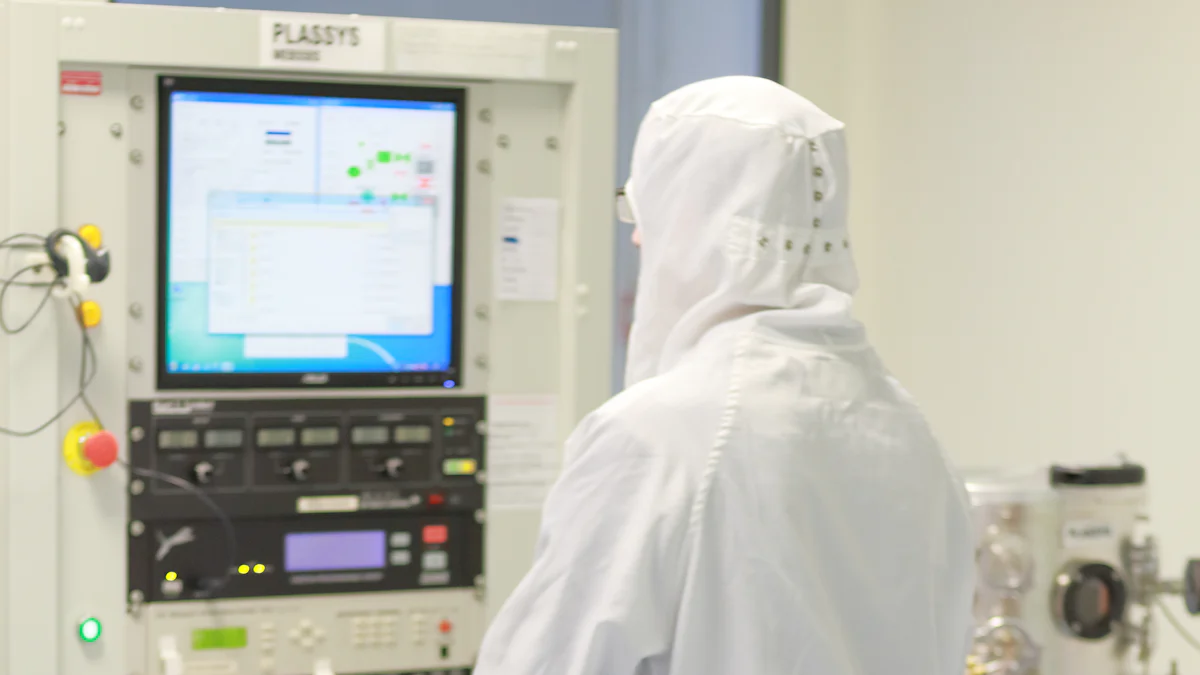
Material Properties
High electron mobility and its impact on high-frequency performance
The 4 Inch GaAs Wafer exhibits exceptional electron mobility, a critical factor in achieving superior high-frequency performance. This property allows electrons to move rapidly through the material, enabling faster signal transmission and reduced energy loss. Devices utilizing this wafer benefit from enhanced operational speeds, making it ideal for applications in RF amplifiers and microwave circuits. High electron mobility also ensures reliable performance in environments requiring precision and efficiency.
Precise resistivity control for device efficiency
Precise resistivity control is another defining feature of the 4 Inch GaAs Wafer. Manufacturers achieve this through advanced doping techniques, ensuring consistent electrical properties across the wafer. Controlled resistivity enhances device efficiency by optimizing current flow and minimizing power dissipation. This characteristic proves essential for high-performance electronic and optoelectronic devices, where even minor variations can impact overall functionality.
Physical Dimensions and Surface Quality
Uniform thickness and TTV (Total Thickness Variation) standards
Uniform thickness is a hallmark of the 4 Inch GaAs Wafer, meeting stringent TTV standards to ensure consistency. Total Thickness Variation directly influences the wafer’s compatibility with fabrication processes, as uneven surfaces can lead to defects during device manufacturing. By adhering to precise thickness specifications, this wafer supports seamless integration into complex systems, reducing the risk of production errors.
Double-sided optical polish and surface roughness control
The double-sided optical polish of the 4 Inch GaAs Wafer guarantees a smooth and defect-free surface. This meticulous polishing process minimizes surface roughness, which is crucial for achieving optimal device performance. A polished surface enhances light reflection and transmission, making the wafer suitable for optoelectronic applications like LEDs and laser diodes. Strict surface quality control ensures that each wafer meets the highest industry standards.
Crystallographic Orientation
Common orientations (e.g., (100), (111)) and their specific applications
The 4 Inch GaAs Wafer is available in common crystallographic orientations, such as (100) and (111). These orientations play a pivotal role in determining the wafer’s suitability for specific applications. For instance, the (100) orientation is widely used in high-speed electronic devices, while the (111) orientation is preferred for certain optoelectronic applications. Selecting the appropriate orientation ensures optimal performance and compatibility with device requirements.
Impact of orientation on device fabrication and performance
Crystallographic orientation significantly impacts device fabrication and performance. The atomic arrangement of the wafer surface influences etching, deposition, and other manufacturing processes. Proper orientation selection enhances the efficiency of these processes, leading to improved device reliability and functionality. Industry professionals rely on the precise orientation of the 4 Inch GaAs Wafer to achieve consistent results in advanced semiconductor applications.
Comparison of GaAs Wafers with Other Types
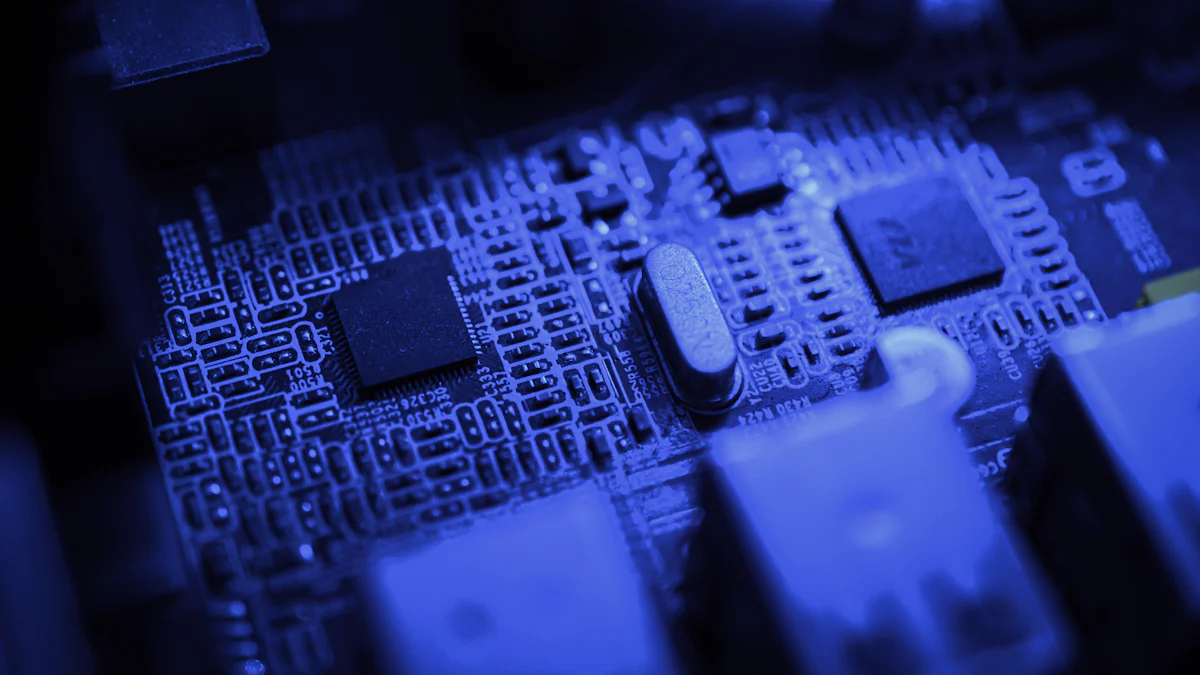
GaAs vs. Silicon Wafers
Differences in electron mobility, thermal conductivity, and frequency performance
Gallium arsenide (GaAs) wafers and silicon wafers differ significantly in their material properties, which directly impact their performance in various applications. GaAs wafers exhibit higher electron mobility compared to silicon. This characteristic allows electrons to travel faster through the material, enabling superior high-frequency performance. Silicon, on the other hand, has lower electron mobility, making it less suitable for applications requiring rapid signal transmission.
Thermal conductivity also sets these materials apart. Silicon offers better thermal conductivity, which helps dissipate heat more effectively in power-intensive devices. However, GaAs compensates for this with its ability to operate efficiently at elevated frequencies. This makes GaAs the preferred choice for high-frequency applications, such as RF amplifiers and microwave circuits.
Frequency performance further highlights the advantages of GaAs wafers. The material’s unique properties allow it to handle higher frequencies with minimal signal degradation. Silicon struggles to match this capability, limiting its use in advanced communication systems.
Applications where GaAs outperforms silicon, such as RF and optoelectronics
GaAs wafers excel in specific applications where silicon falls short. In RF and microwave technologies, GaAs provides unmatched performance due to its high electron mobility and frequency handling capabilities. Devices like RF amplifiers, radar systems, and satellite communication equipment rely on GaAs wafers for their superior efficiency and reliability.
In optoelectronics, GaAs also outshines silicon. Its direct bandgap enables efficient light emission, making it ideal for LEDs, laser diodes, and photodetectors. Silicon, with its indirect bandgap, cannot achieve the same level of performance in these applications. GaAs wafers also play a crucial role in solar cell technology, offering higher energy conversion efficiency compared to silicon-based alternatives.
Doped vs. Undoped GaAs Wafers
Characteristics and use cases of Si-doped GaAs wafers
Silicon-doped GaAs wafers possess unique characteristics that make them suitable for specific applications. Doping introduces controlled impurities into the wafer, enhancing its electrical conductivity and enabling precise resistivity control. This process ensures consistent performance across the wafer, which is essential for high-speed electronic devices.
Si-doped GaAs wafers find extensive use in RF and microwave applications. Their enhanced conductivity supports efficient signal transmission, making them indispensable in devices like RF amplifiers and high-frequency oscillators. These wafers also perform well in power electronics, where precise electrical properties are critical for device reliability.
Applications of undoped GaAs wafers in optoelectronics and advanced devices
Undoped GaAs wafers, in contrast, are primarily used in optoelectronic applications. Their intrinsic properties, free from the influence of doping, make them ideal for devices requiring high optical purity. LEDs, laser diodes, and photodetectors benefit from the superior light-emitting and light-absorbing capabilities of undoped GaAs wafers.
Advanced semiconductor devices also utilize undoped GaAs wafers. Their high electron mobility and direct bandgap enable efficient performance in cutting-edge technologies, including quantum computing and next-generation sensors. These wafers provide a reliable foundation for innovations in the semiconductor industry.
Applications of 4 Inch GaAs Wafers

High-Frequency Devices
Use in RF amplifiers, microwave circuits, and 5G technology
The 4 Inch GaAs Wafer plays a pivotal role in high-frequency devices. Its exceptional electron mobility allows RF amplifiers to achieve superior signal amplification with minimal distortion. Microwave circuits benefit from the wafer’s ability to handle high-frequency signals efficiently, ensuring reliable performance in demanding environments. In 5G technology, the wafer supports faster data transmission and enhanced connectivity. Its unique properties make it indispensable for developing advanced communication systems that require precision and speed.
Advantages in satellite communications and radar systems
Satellite communication systems rely on the 4 Inch GaAs Wafer for its ability to operate at elevated frequencies. The wafer ensures stable signal transmission over long distances, which is critical for maintaining uninterrupted communication. Radar systems also benefit from the wafer’s high-frequency capabilities. It enhances the accuracy and range of radar signals, making it a preferred choice for applications in defense and aerospace industries. The wafer’s reliability under extreme conditions further solidifies its importance in these fields.
Optoelectronic Devices
Role in LEDs, laser diodes, and photodetectors
The 4 Inch GaAs Wafer serves as a foundation for optoelectronic devices. Its direct bandgap enables efficient light emission, which is essential for LEDs and laser diodes. These devices deliver high brightness and energy efficiency, making them suitable for applications in displays, lighting, and optical communication. Photodetectors also leverage the wafer’s properties to achieve high sensitivity and fast response times. This makes them ideal for use in imaging systems, optical sensors, and data transmission technologies.
Importance in solar cells and energy-efficient lighting
Solar cells made from the 4 Inch GaAs Wafer exhibit superior energy conversion efficiency compared to silicon-based alternatives. The wafer’s ability to absorb a wide spectrum of sunlight ensures maximum power generation, even in low-light conditions. This makes it a preferred choice for space-based solar panels and high-performance terrestrial applications. In energy-efficient lighting, the wafer supports the development of advanced LED technologies that consume less power while delivering optimal illumination.
Emerging Applications
Use in quantum computing and advanced sensors
Quantum computing represents a frontier where the 4 Inch GaAs Wafer demonstrates immense potential. Its high electron mobility and precise resistivity control enable the creation of qubits with enhanced stability and performance. Advanced sensors also benefit from the wafer’s properties. It supports the development of highly sensitive devices used in medical diagnostics, environmental monitoring, and industrial automation. These applications highlight the wafer’s versatility in addressing emerging technological challenges.
Potential in next-generation semiconductor technologies
The 4 Inch GaAs Wafer holds promise for next-generation semiconductor technologies. Its compatibility with cutting-edge materials like Gallium Oxide and AlN expands its application scope. Researchers and manufacturers explore its use in power electronics, where efficiency and reliability are paramount. The wafer’s ability to integrate seamlessly into complex device architectures positions it as a cornerstone for future innovations in the semiconductor industry.
The 4 Inch GaAs Wafer stands out with its exceptional material properties, precise dimensions, and superior surface quality. Its high electron mobility and resistivity control ensure optimal performance in advanced semiconductor applications. The wafer’s advantages over other types, particularly in high-frequency and optoelectronic devices, make it a preferred choice for industry professionals. VET Energy demonstrates a strong commitment to quality by adhering to rigorous standards and offering customization options. This dedication ensures that the wafer meets diverse industry needs while supporting innovation in next-generation technologies.
FAQ
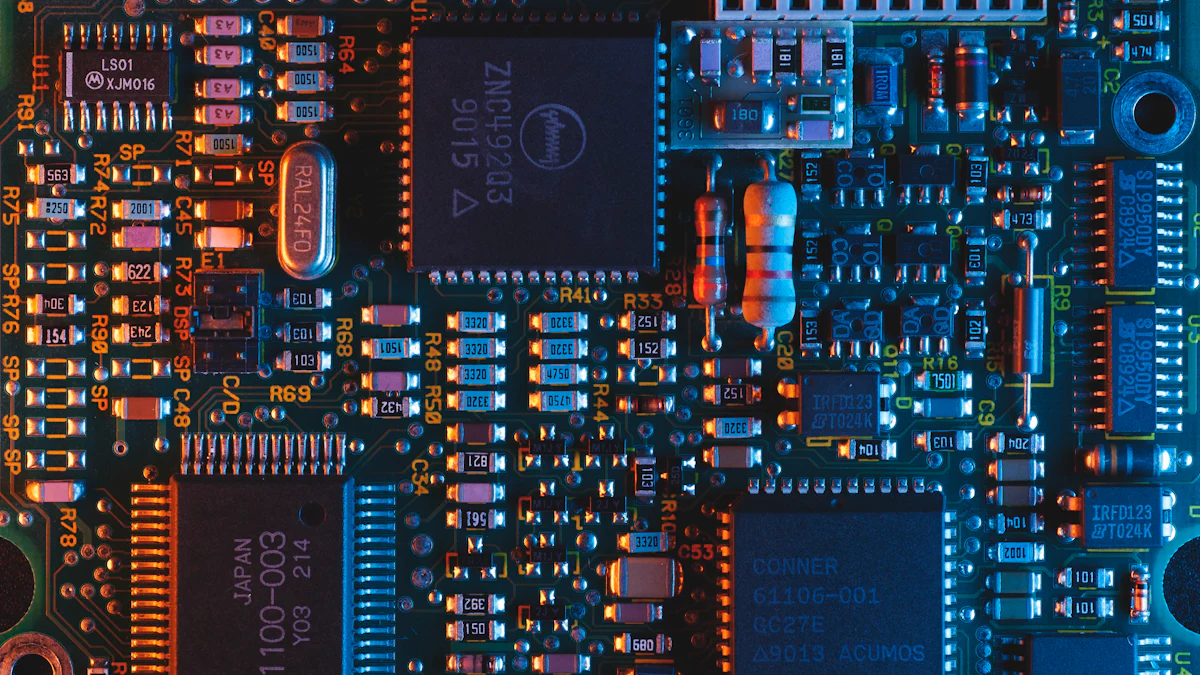
What is a 4 Inch GaAs Wafer?
A 4 Inch GaAs Wafer is a semiconductor substrate made from gallium arsenide with a diameter of 4 inches. It is widely used in high-performance electronic and optoelectronic devices due to its superior electron mobility, direct bandgap, and ability to operate at high frequencies.
Why is high electron mobility important in GaAs wafers?
High electron mobility allows electrons to move quickly through the material, enabling faster signal transmission and reduced energy loss. This property makes GaAs wafers ideal for applications requiring high-frequency performance, such as RF amplifiers and microwave circuits.
How does the crystallographic orientation affect device performance?
The crystallographic orientation determines the atomic arrangement on the wafer’s surface, which influences manufacturing processes like etching and deposition. Proper orientation selection ensures optimal device performance and compatibility with specific applications, such as high-speed electronics or optoelectronics.
What are the advantages of GaAs wafers over silicon wafers?
GaAs wafers offer higher electron mobility, superior frequency performance, and a direct bandgap, making them better suited for high-frequency and optoelectronic applications. Silicon wafers, while more thermally conductive, cannot match GaAs in applications like RF amplifiers, LEDs, and laser diodes.
What is the significance of precise resistivity control in GaAs wafers?
Precise resistivity control ensures consistent electrical properties across the wafer. This consistency optimizes current flow and minimizes power dissipation, which is critical for high-performance devices in both electronic and optoelectronic applications.
What are the common applications of 4 Inch GaAs Wafers?
4 Inch GaAs Wafers are used in a variety of applications, including RF amplifiers, microwave circuits, 5G technology, LEDs, laser diodes, photodetectors, solar cells, satellite communications, radar systems, and emerging technologies like quantum computing and advanced sensors.
What is the difference between doped and undoped GaAs wafers?
Doped GaAs wafers contain controlled impurities to enhance electrical conductivity and are commonly used in RF and microwave applications. Undoped GaAs wafers, free from doping influences, are preferred for optoelectronic devices requiring high optical purity, such as LEDs and photodetectors.
How does surface quality impact the performance of GaAs wafers?
Surface quality, including double-sided optical polish and minimal surface roughness, ensures defect-free wafers. This enhances light reflection and transmission, which is essential for optoelectronic applications like LEDs and laser diodes. High surface quality also reduces production errors during device fabrication.
Can GaAs wafers be customized for specific applications?
Yes, GaAs wafers can be customized to meet specific requirements. Customization options include variations in doping levels, crystallographic orientations, and surface finishes. These tailored solutions ensure compatibility with diverse applications and manufacturing processes.
Why choose VET Energy for 4 Inch GaAs Wafers?
VET Energy provides high-quality 4 Inch GaAs Wafers with exceptional material properties, precise dimensions, and rigorous quality standards. The company offers customization options and technical support, ensuring that each wafer meets the unique needs of advanced semiconductor applications.

